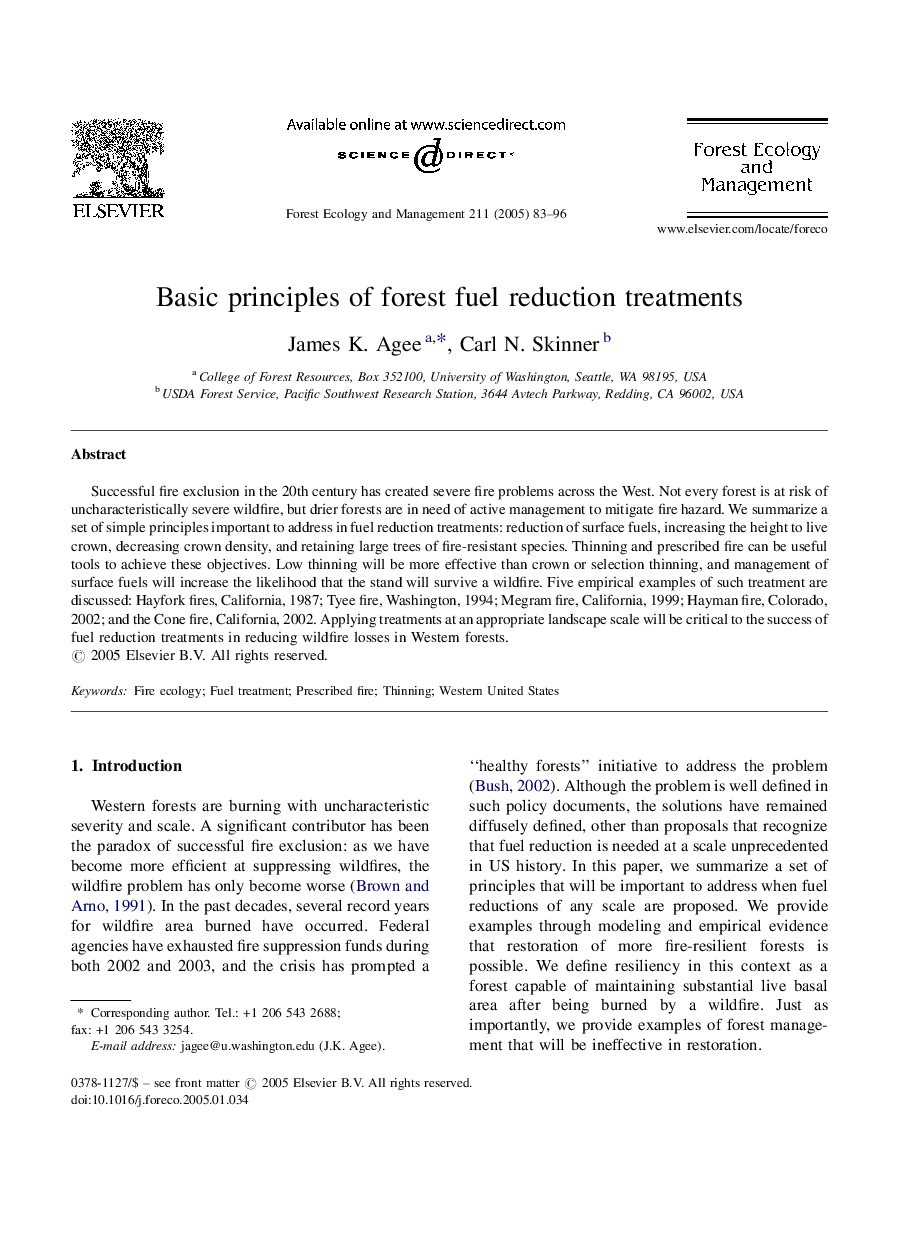| Article ID | Journal | Published Year | Pages | File Type |
|---|---|---|---|---|
| 9620339 | Forest Ecology and Management | 2005 | 14 Pages |
Abstract
Successful fire exclusion in the 20th century has created severe fire problems across the West. Not every forest is at risk of uncharacteristically severe wildfire, but drier forests are in need of active management to mitigate fire hazard. We summarize a set of simple principles important to address in fuel reduction treatments: reduction of surface fuels, increasing the height to live crown, decreasing crown density, and retaining large trees of fire-resistant species. Thinning and prescribed fire can be useful tools to achieve these objectives. Low thinning will be more effective than crown or selection thinning, and management of surface fuels will increase the likelihood that the stand will survive a wildfire. Five empirical examples of such treatment are discussed: Hayfork fires, California, 1987; Tyee fire, Washington, 1994; Megram fire, California, 1999; Hayman fire, Colorado, 2002; and the Cone fire, California, 2002. Applying treatments at an appropriate landscape scale will be critical to the success of fuel reduction treatments in reducing wildfire losses in Western forests.
Related Topics
Life Sciences
Agricultural and Biological Sciences
Ecology, Evolution, Behavior and Systematics
Authors
James K. Agee, Carl N. Skinner,
